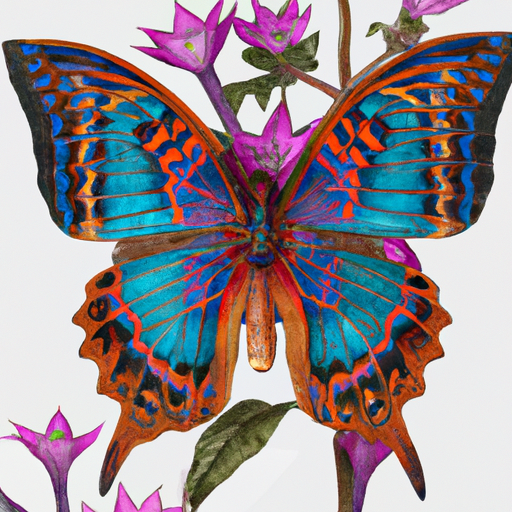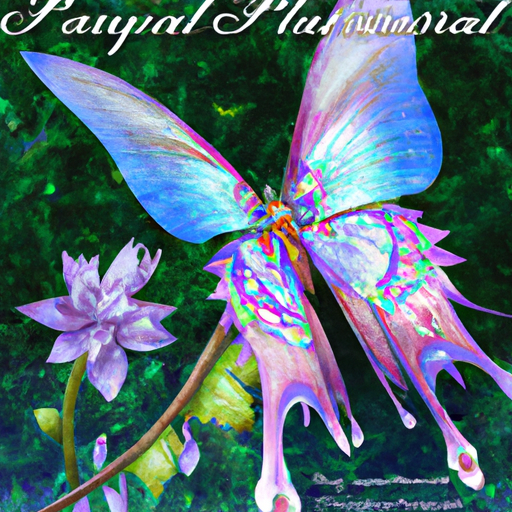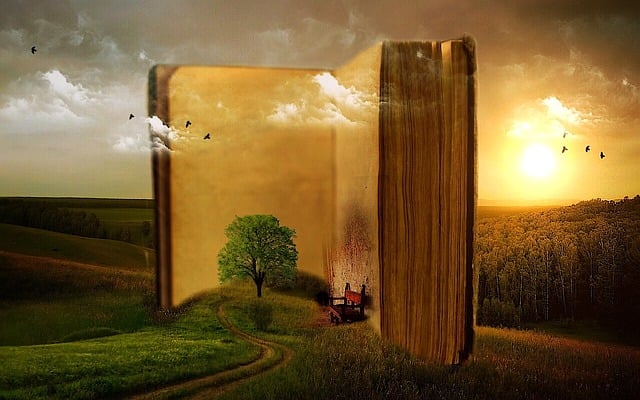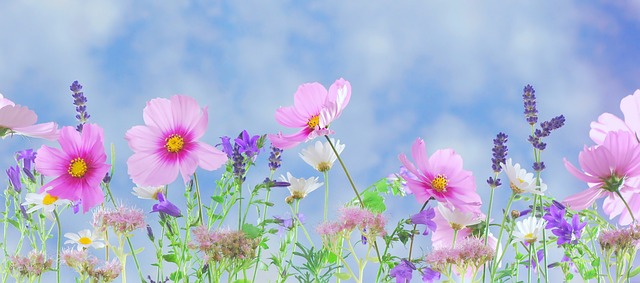What are Fairies?
Defining fairies
Fairies are enchanting creatures that have been a longstanding part of folklore and mythology across different cultures. They are often described as supernatural beings, possessing magical powers and living in a separate realm from our own. However, the exact definition of fairies may vary depending on the cultural narratives and beliefs surrounding them.
Historical references
Fairies have roots in ancient legends and have been mentioned in various historical texts and mythologies. Stories of fairies can be found in Celtic folklore, where they were known as “sidhe” or “sídh” and were believed to be mischievous entities dwelling in the natural world. In European folklore, fairies were often associated with forests, meadows, and other natural landscapes.
Common characteristics
Fairies are typically depicted as small, beautiful beings with ethereal appearances. They are renowned for their enchanting voices, and it is said that the sound of their laughter can be heard as soft tinkling bells in the distance. Fairies are known to possess magical abilities, such as the power to grant wishes, manipulate nature, and even shape-shift into different forms.
Whether real or simply the product of imagination and folklore, the allure of fairies continues to captivate and inspire the human imagination. Exploring the secrets and legends surrounding fairies can reveal fascinating insights into our collective cultural heritage and the enduring power of myths and legends.

The Origins of Fairy Folklore
Early myths and legends
Fairy folklore has fascinated people for centuries, sparking our imagination and leaving us questioning their existence. The tales of fairies date back to ancient times, with various cultures around the world having their own unique interpretations of these magical beings. In early myths and legends, fairies were often portrayed as powerful and enigmatic creatures with supernatural abilities. From the mischievous tricksters of Celtic folklore to the ethereal spirits of Ancient Greece, these stories have shaped our perception of fairies.
Cultural variations
One of the most intriguing aspects of fairy folklore is the cultural variations that exist. Each culture has contributed its own rich tapestry of fairy tales and beliefs. For instance, Irish folklore introduces us to the leprechauns, mischievous fairies known for their hidden pots of gold. On the other hand, Scandinavian folklore presents us with the beautiful and otherworldly elves, while Japanese folklore tells stories of the whimsical and sometimes sinister yokai. These diverse representations of fairies highlight the universality of our fascination with these enchanting beings.
Influence on literature and art
Fairies have not only captured our imaginations through folklore but have also left an indelible mark on literature and art. From William Shakespeare’s “A Midsummer Night’s Dream” to J.M. Barrie’s “Peter Pan,” fairies have been central to some of the most beloved literary works. Their allure has also permeated the world of art, inspiring countless paintings, sculptures, and illustrations. The depiction of fairies in these mediums reinforces their symbolic significance as embodiments of magic, beauty, and the extraordinary.
As we delve deeper into the secrets of fairies, we uncover a rich tapestry of folklore, cultural variations, and artistic influences that contribute to our enduring fascination with these elusive creatures. The exploration of their origins allows us to appreciate the depth and complexity of fairy folklore, leaving us with both unanswered questions and a sense of wonder.
Different Types of Fairies
If you are like me, fascinated by the enchanting world of fairies, then buckle up! Let’s delve into the mystical realm of these ethereal beings and uncover the secrets behind their folklore and existence. Throughout history, countless tales, legends, and myths have spoken of different types of fairies, each with its own unique characteristics and powers.
Nature spirits
Nature spirits are perhaps the most well-known fairies, often depicted as guardians of forests, meadows, and mountains. They are closely connected to the natural world, nurturing plants and animals, and radiating an aura of serenity and tranquility.
Elemental beings
Elemental beings, on the other hand, are linked to the four classical elements: earth, air, fire, and water. These extraordinary fairies harness the powers of nature, manipulating forces like wind, fire, or water with ease.
Household fairies
Ever felt like someone was helping you with your household tasks? Well, you might have encountered a household fairy! These mischievous yet helpful creatures are known for tidying up, doing chores, and bringing good luck to those who appreciate their presence.
Water fairies
Water fairies, such as mermaids and selkies, call the vast and mysterious oceans their home. They possess a deep connection to the underwater world, often bewitching sailors and enchanting all who encounter them with their mesmerizing songs.
Night fairies and Dark fairies
Night fairies and dark fairies are the nocturnal inhabitants of the fairy realm, often associated with moonlight and shadowy corners. While some are mischievous tricksters, others are guardians of secrets or bearers of ancient wisdom.
So, whether you are in awe of their magical abilities or simply captivated by the rich folklore surrounding fairies, there is an entire universe waiting to be explored. From nature spirits to elemental beings, household fairies, water fairies, night fairies, and dark fairies, each type has its own distinct charm and allure. Open your heart to the realm of fairies, and who knows what wondrous encounters await you!

Fairy Powers and Abilities
Magical powers
Fairies possess a vast range of magical powers that have captivated the imaginations of humans for centuries. These enchanting beings are believed to possess the ability to control the elements, manipulate time and space, and manifest illusions that can deceive even the most astute observers. Additionally, fairies are known for their extraordinary healing abilities, possessing the power to mend wounds and cure ailments with a single touch. These magical powers have been woven into countless folktales and legends, contributing to the enduring fascination with these mysterious creatures.
Control over nature
One of the most prominent aspects of fairy lore is their profound connection with nature. Fairies are said to possess the ability to communicate with plants and animals, and they can influence the natural world in various ways. They are believed to have the power to make plants flourish, control the weather, and even summon the forces of nature when needed. This intimate relationship with the environment highlights the belief that fairies are guardians of the natural world, promoting harmony and balance.
Shape-shifting abilities
Fairies are renowned for their shape-shifting abilities, which allow them to transform their appearance at will. They can assume the form of animals, plants, or even inanimate objects, seamlessly blending into their surroundings. This skill not only allows fairies to remain hidden from prying eyes but also enables them to navigate different realms and dimensions, transcending the limits of their physical form.
Granting wishes
A common belief in folklore is that fairies have the power to grant wishes. However, these wishes often come with a catch, as fairies are mischievous beings who delight in playing tricks on humans. It is said that one must be cautious when making a request, as fairies may twist the wish to suit their own whims. Nonetheless, the allure of having one’s desires fulfilled by these magical beings continues to spark the human imagination.
Illusion and glamour
Fairies possess the ability to create illusions and project glamour, which adds to their enchanting allure. They can manipulate perceptions, creating scenes that may mesmerize or deceive onlookers. This power allows fairies to create an otherworldly atmosphere, filling their presence with an ethereal beauty that entices and beguiles.
In unraveling the secrets of fairies, we delve into their magical powers, their connection with nature, their shape-shifting abilities, their reputation for granting wishes with a hint of mischief, and their ability to captivate with illusion and glamour. These aspects of fairy folklore shed light on the enduring fascination with these enchanting creatures and invite us to explore the realm where folklore and reality intertwine.

Fairy Behavior and Interactions
Mischievous pranks
When it comes to fairy behavior, one cannot overlook their mischievous pranks that have been passed down through generations. These elusive creatures love to play tricks on unsuspecting humans, often causing minor mishaps and confusion. From stealing household items to rearranging furniture in the dead of night, fairies know how to keep us on our toes.
Helping or hindering humans
Contrary to popular belief, fairies aren’t always out to trouble us. Reports from folklore suggest that they have assisted humans in times of need, especially those who show respect for the natural world. Whether it’s protecting lost travelers or lending a helping hand in household chores, fairies can be a source of unexpected aid.
Relationship with nature
Fairies are deeply connected to the natural world, with some folklore even suggesting that they are guardians of the environment. They are often spotted in meadows, forests, and near bodies of water, displaying a profound affinity for the Earth’s beauty. Observing fairies in their natural habitat can reveal their harmonious existence alongside plants, animals, and elements.
Interaction with other fairies
Not only do fairies interact with humans, but they also have intricate relationships among themselves. Legends describe elaborate fairy gatherings where they dance, sing, and celebrate their enchanting existence. These gatherings are said to be magical and provide a glimpse into their mysterious and intricate society.
Deals and bargains
Fairies are known to engage in deals and bargains with humans, but one must proceed with caution when entering into such agreements. Legends warn that fairies often have ulterior motives, seeking a hidden benefit for themselves. It is wise to think twice before accepting any offers, as they may come with unintended consequences.
So, to unravel the secrets of fairies, one must delve into their behavior and interactions. From their mischievous pranks to their relationship with nature, fairies continue to captivate our imagination. Understanding their folklore brings us closer to unveiling the reality behind their existence, allowing us to appreciate their magical presence in our lives.

Encounters and Sightings
Throughout history, there have been countless stories and anecdotes about encounters with fairies. These tales have fascinated and intrigued people for centuries, blurring the lines between folklore and reality. In this section, I will delve into the historical accounts of fairy sightings, as well as explore modern-day observations and testimonies from witnesses.
Historical accounts
From ancient mythologies to medieval folklore, the presence of fairies can be traced back through the annals of time. In various cultures and eras, there have been reports of mysterious beings, often described as ethereal and enchanting, with the ability to interact with humans. These encounters range from mischievous pranks to benevolent assistance, leaving a lasting impression on those who claim to have experienced them.
Modern-day observations
As the world progresses and the realms of science and reason gain dominance, it is fascinating to note that sightings of fairies have not ceased. In recent times, there have been numerous reports of individuals witnessing these magical beings in natural surroundings or even within their own homes. These encounters have sparked debates among skeptics and believers alike, further blurring the lines between fact and fantasy.
Testimonies and witness reports
Most compelling of all are the testimonies and witness reports from those who claim to have seen fairies firsthand. These accounts provide a glimpse into the enchanting world of these mystical creatures. Witnesses often describe encounters that are filled with wonder and awe, as fairies reveal their playful nature or demonstrate their powers over nature. While skeptics question the authenticity of these stories, these firsthand experiences cannot be dismissed lightly.
In unraveling the secrets of fairies, it becomes apparent that the world of folklore and reality can intertwine in ways that challenge our perceptions and stretch the limits of our imagination. Whether we choose to believe in fairies or not, their allure and mystery continue to captivate our hearts and minds.

Scientific Perspectives on Fairies
Psychological Explanations
When it comes to unraveling the secrets of fairies, science has offered intriguing insights through psychological explanations. Experts suggest that belief in fairies can be rooted in our innate human need for enchantment and the desire to believe in something magical and otherworldly. Our minds have a way of creating fantastical creatures to provide comfort and escape from the harsh realities of life. This psychological phenomenon, known as pareidolia, causes us to perceive meaningful patterns in random stimuli, making us believe we see fairies in the flickering shadows or hear them in the rustle of leaves.
Folklore Analysis
Delving into the realm of folklore helps us gain a deeper understanding of fairies. Legends and stories from cultures around the world reveal the diverse characteristics and powers attributed to these mystical beings. From Tinker Bell’s mischievous nature to the fairies of Scottish folklore who punish those that harm nature, each tale adds a new lore to the intricate tapestry of fairy mythology. By studying these narratives passed down through generations, we can gain insight into the motivations and roles fairies play in our collective imagination.
Paranormal Investigations
Entering the realm of the supernatural, paranormal investigations strive to uncover concrete evidence of the existence of fairies. Investigators employ various techniques such as using sensitive equipment to capture electronic voice phenomena or analyzing photographs for anomalous energy patterns. While skeptics may dismiss such endeavors as mere pseudoscience, these investigations provide a fascinating glimpse into the possibilities of an unseen world of fairies. The pursuit of scientific validation of fairies pushes the boundaries of our understanding and sparks curiosity about the mysteries that lie beyond our conventional perception.
In my exploration of fairy folklore and reality, I discovered that scientific perspectives encompass psychological explanations, folklore analysis, and paranormal investigations. These approaches shed light on the underlying reasons behind our belief in fairies, the captivating narratives that have shaped our understanding, and the efforts to uncover tangible evidence of their existence. This journey has made me realize that the secrets of fairies may forever remain enigmatic, but the power of these mystical creatures to ignite our imagination and fuel our sense of wonder will endure.
Fairy Folklore in Different Cultures
European fairy tales
European folklore is rich with enchanting tales of fairies. From the mischievous sprites of England to the ethereal nymphs of Greece, these mythical beings have captured the imaginations of people for centuries. European fairy tales often depict fairies as magical creatures with the ability to grant wishes, heal sickness, or bring good fortune. These stories have become a cherished part of our cultural heritage, passing down from generation to generation.
Irish and Celtic mythology
In Irish and Celtic mythology, fairies, known as “Sidhe” or “Tuatha de Danann,” hold a prominent place. Legends tell of their powerful magic and their connection to the mystical realm of “Tír na nÓg.” According to these beliefs, fairies can control the elements, shape-shift, and even influence human fate. Their presence in ancient folklore remains deeply embedded in Irish and Celtic cultures to this day.
Asian folklore
Asian folklore presents a different perspective on fairies. In Japanese folklore, for example, Yokai are a type of fairy-like creature with supernatural powers. These Yokai can take many forms, ranging from benevolent spirits to mischievous tricksters. Similarly, in Chinese folklore, fairies called “Xian” are believed to possess incredible wisdom and longevity. They are frequently portrayed as celestial beings, often associated with the moon.
Native American legends
Native American cultures are also rich with fairy-like creatures in their legends and myths. For instance, the Cherokee tribe tells stories of “Unega,” forest spirits who protect the natural world. These spirits are said to possess the ability to commune with animals and have a deep understanding of plant medicine. Native American folklore holds that acknowledging and respecting these fairies is essential for maintaining harmony with nature.
Throughout different cultures, fairies have captivated our collective imagination as magical entities with mystical powers. Whether you believe in their existence or not, the enduring tales of fairies continue to enchant and inspire us, reminding us of the profound connection between folklore and reality.
Pop Culture and Fairies
Literary adaptations
As a lover of fairies, I have always been fascinated by the way they are portrayed in popular culture. From classic literature to modern novels and everything in between, fairies have captivated the imaginations of countless writers and readers alike. Take, for example, the works of William Shakespeare, who depicted fairies as mischievous creatures with magical powers in his play “A Midsummer Night’s Dream.” These literary adaptations not only brought fairies to life but also showcased their ability to manipulate human emotions and create enchanting worlds.
Film and television representations
In the realm of film and television, fairies have continued to captivate audiences. We have seen them portrayed as graceful and ethereal beings like Tinker Bell in Disney’s “Peter Pan,” or as powerful and mysterious creatures in movies like “Pan’s Labyrinth” and “Maleficent.” These representations emphasize the diversity of fairies in folklore and their ability to shape-shift, cast spells, and grant wishes.
Modern fantasy books and games
In recent years, fairies have also found a special place in modern fantasy books and games. Authors and game developers have created intricate worlds where fairies are central characters with unique powers and abilities. These stories not only provide entertainment but also spark our imagination, allowing us to explore the possibilities of interacting with fairies ourselves.
The influence of fairies in pop culture is undeniable. Their portrayal in literature, film, and games continues to enchant and fascinate audiences of all ages. Whether these representations hold any truth to the folklore surrounding fairies is a question yet to be answered, but for now, we can continue to enjoy the magic they bring to our cultural landscape.
Conclusion
I hope this exploration into the world of fairies has shed some light on their fascinating existence. From the rich folklore surrounding these magical beings to the debate about their reality, there is much to ponder. Although the existence of fairies remains a mystery, their presence in folklore across cultures throughout history suggests that they hold a special place in our collective imagination.
Folklore and Reality
Throughout various cultures and civilizations, tales of fairies have endured, captivating both young and old. They are described as ethereal creatures, known for their mischievous nature and their ability to grant wishes. The belief in fairies has been deeply ingrained in our folklore, with countless stories and legends passed down through generations. Whether you see fairies as mythical beings or simply a product of our imagination, their presence in folklore is undeniable.
Powers and Abilities
Fairies are said to possess an extensive range of powers and abilities. From the gift of healing to the power of invisibility, fairies are often associated with magic and enchantment. They are believed to have the ability to commune with nature and possess an affinity for plants and animals. Some tales even tell of fairies bestowing good fortune upon those who show them kindness. Whether these powers are real or simply figments of our imagination, the allure of the fairy’s supernatural abilities is undeniable.
In conclusion, fairies continue to captivate our imaginations and inspire wonder. Whether they are real or not, their presence in folklore serves as a testament to the power of storytelling and our innate desire to believe in the extraordinary. So, the next time you find yourself in a moonlit forest or stumble upon a ring of mushrooms, keep an open mind, for who knows what secrets the world of fairies may hold.